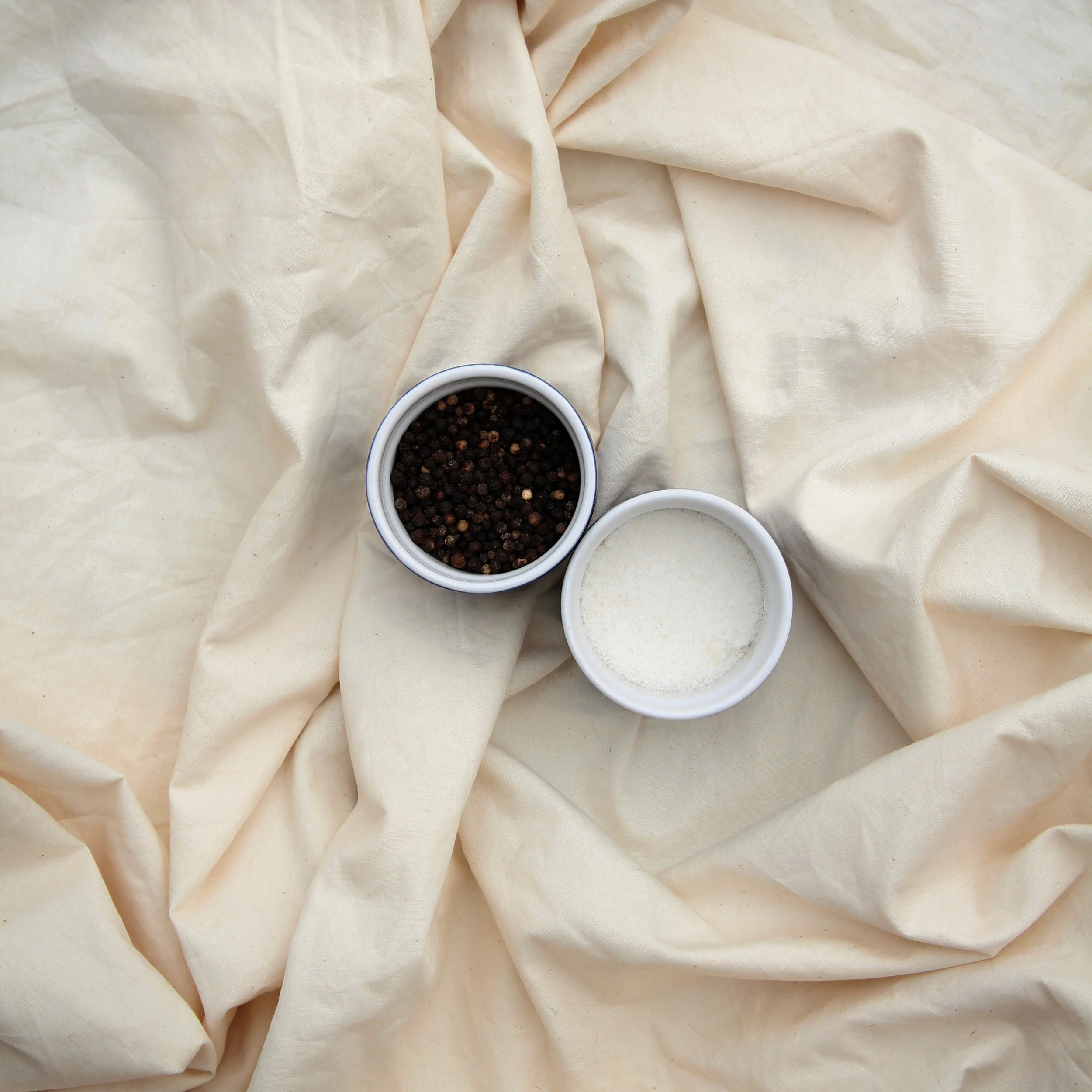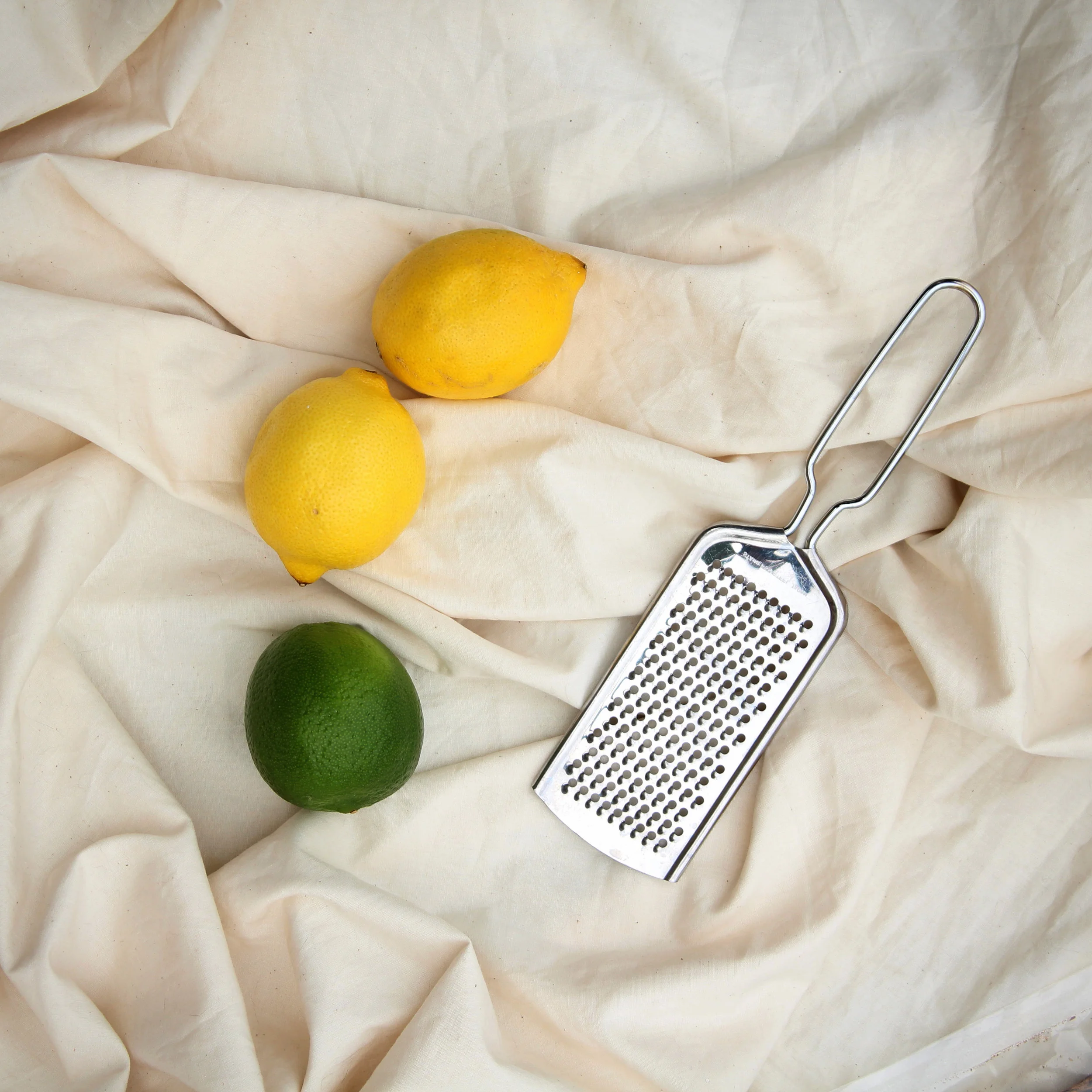HOW TO FLAVOR PROFILE

Flavor profiling is the secret of any professional kitchen. Learning how to balance and combine flavors to establish a well seasoned meal is everything in the restaurant industry. It is what generates and destroys chefs. It is an art that often goes unnoticed by consumers, yet is a very high powered topic in Culinary school. To an everyday cook, seasoning a meal is either taught through a recipe or through an inclination as to what seems right. This post is here to help you understand how we flavor profile, why we do so, and give my top 5 ingredients I always cook with.
So how do you properly flavor profile a dish? There is a lot to take into consideration when you're cooking. First we look at the traditional ideals & cultural cooking aspects to a specific meal. This accounts for traditional spices, herbs, flavors (e.g. spicy, sweet, sour, salty, earthy), & cooking techniques and methods. From there we adjust the recipe, techniques, and ingredients to properly suit the end product we want.
Next we take into account the modern idea of what we should be eating. We all know French cuisine as having a surplus of richness with a variety of breads, cheeses, thick creams, and other fatty ingredients. In the 2010's we began to take on a more healthy approach towards food. Salads, smoothies, fresh juices, natural sweeteners, and healthy fats have undoubtedly become more popular. That is where cultural fusion comes into play. Cultural fusion is taking two or more cuisines and combining them to cultivate a new idea or craft a healthier version of an originally fatty food. So, if we took the traditional french food and mixed it with California style cooking, we may come out with something like a gluten free eclair made with coconut cream & dark chocolate.
With whatever cuisine you are taking on, the final dish should be flavor balanced. That entails that even if a dish should taste spicy it should also hit all of the other notes of the palate including sweet, salty, sour, and earthy. Being sure to add all flavors to the mix is what can make home cooked food taste like Michelin Star quality dishes. Learning how much to add to each different meal is an art. I would suggest starting with a little of each ingredient which will allow you to gradually adjust the flavor properly. The five ingredients I recommend using to achieve the proper flavors of almost anything are listed below allow with why I use them for health benefits.
Flavor profiling is an art that is learned over time. I had this teacher in Culinary school that really exaggerated the elements of flavor profiling to all of his students. He would taste our food and if it was too bland would yell "boring!" for the whole class to hear. It wasn't in mean favor, but did make us all strive to gain a better understanding of flavor profiling. Take your time with seasoning and remember that balance is the greatest aspect of any meal.
1. SALT & PEPPER
Yes, salt and pepper. These two may seem quite obvious, but I know people can be worried about using too much of them in their cooking. Pepper has a great spice to it that even toddlers enjoy. The grind of the pepper is what varies how spicy your dish can taste. There are three main grinds of pepper you can purchase including fine grind, table grind, and whole pepper kernels. Table grind pepper is a medium coarse texture that will be more noticeable in foods. I find this to be the least appetizing because of its weird place between fine and fresh cracked pepper. Its not a happy texture for me. Fine grind pepper is my favorite for adding into any liquid foods or topping off any finished products. Due to just how small it is, it melts really well into the food and you achieve the taste of pepper without having to crunch on anything. Whole kernels can be used in a spice grinder or pepper mill. Fresh cracked pepper is really tasty in salads or savory breads. Salt has a bad reputation for many people. Too much salt intake can have a negative impact on the body, but if you use sea salts you can actually add a positive impact to both cooking and your body. Sea salt is a natural salt that comes from the ocean. It does not need to be heated like iodized salt and therefore keeps all of the essential minerals your body needs. Sea salt is surprisingly great for helping with weight loss as it aids in breaking down foods faster and helps create digestive juices.
2. RAW HONEY
Honey is the most used sweetener in my kitchen. Raw honey, especially, has many beneficial properties to it. It helps strengthen the immune system and aids in digestion health. I use in both savory and sweet dishes because of its unique flavor and ability to add richness to anything. It will not over sweeten chicken, but it will provide a great depth of flavor to brownies. Raw honey is so much better for you than traditional honey because it is not overly refined and has retained all of the health benefits because of that.
3. CITRUS
Citrus is quite possibly my favorite one on this list. The juice or zest of any citrus fruit adds a brightness to food. It can be used when you feel like acid is needed to liven up something boring or to combat something too sweet. Citrus fruits are packed with vitamin C and help wake up metabolism. I like to use citrus in baked goods, red sauces, fresh salsas, dressings for salads, glazes for chicken, and in spicy foods.
4. CINNAMON & NUTMEG
This couple of spices are so well married together. Utilized correctly, they can add a real sense of prolonged cooking. By that I mean, they make flavors taste as if you have been cooking for hours. That is why many recipes containing red meat call for cinnamon and nutmeg. There is a preconceived notion that they can only be used in cream sauces or baked goods, but they work well in barbecue, spicy dishes, jellies or jams, marinades for pork or lamb, and hot drinks such as cocoa or apple cider. Cinnamon can reduce blood sugar and treat common colds. Nutmeg detoxifies the body and helps you to get a better night of sleep. When purchasing these spices, I suggest you do not cheap out. There are two main types of cinnamon, Ceylon and Cassia. Ceylon is more expensive, but is superior in quality and offers more health advantages. Cassia is the cheap cinnamon and has a harsh flavor that most people's taste buds are easily aware of. Ceylon cinnamon is much more calm and easier to blend into foods. Nutmeg is best purchased whole and can be grated with a small hand grater.
5. GARLIC & SHALLOT
These two are a given in my fridge. I use both of them in all of my soups & sauces. Garlic can be strong if over used, but one or two cloves is enough to make a dish have garlic's specific flavor. Garlic has a spiciness similar to horseradish in that in large amounts it can be very pungent and create a slight burning sensation on the palate. Garlic has a delicious, distinct aroma and flavor. It also contains an antioxidant that prevents Alzheimer's Disease and is low in calories, so why not mince it up and add it in? Shallots are small onion-like vegetables that I like to think of as a cross between garlic and onion. If you do not like the fierceness of garlic or onion, shallot is great alternative because of its mellow mix of those flavors. Shallots have more antioxidants and vitamins compared to onions.




